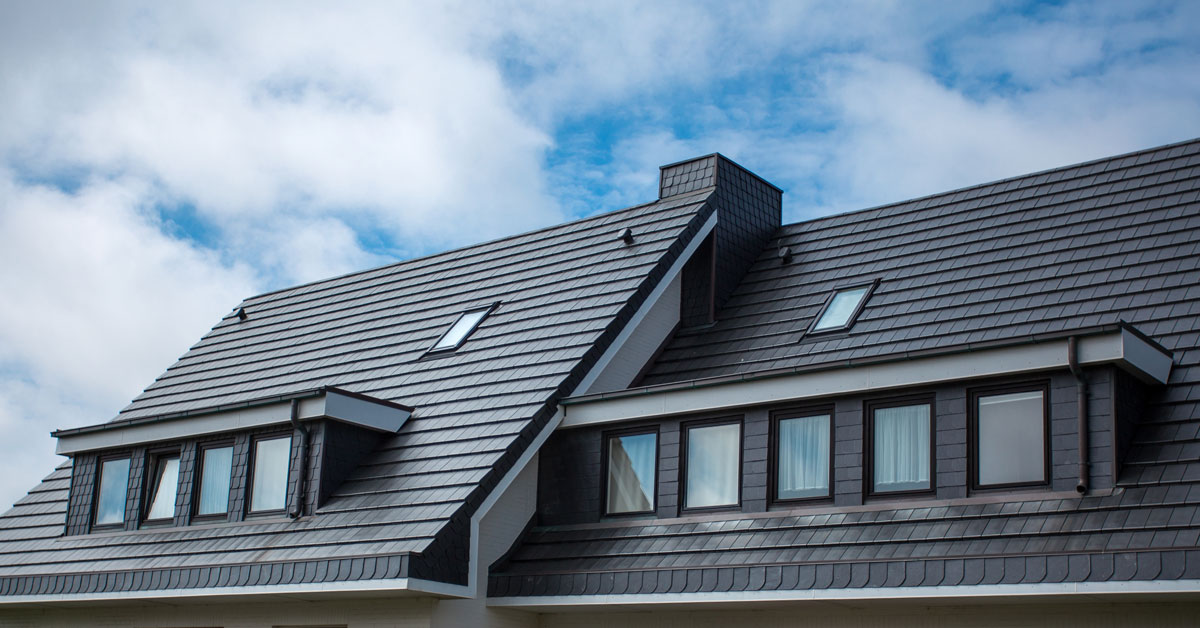The Significance of Picking Skilled Roofing Companies Gainesville Florida
The Significance of Picking Skilled Roofing Companies Gainesville Florida
Blog Article
Finest Practices for Ensuring Proper Roof Covering Air Flow
A balanced consumption and exhaust vent proportion, commonly 1:300, plays an essential function, with consumption vents preferably placed at the reduced edge of the roofing for trendy air entry and exhaust vents at the top for warm air exit. Keeping insulation away from vents is vital to avoid airflow restriction.
Understand Ventilation Essentials
Properly comprehending air flow fundamentals is crucial for guaranteeing the longevity and effectiveness of roof. Effective air flow mitigates moisture buildup and temperature level extremes in the attic room, both of which can lead to considerable architectural damage over time. A well-ventilated roof helps in preventing common issues such as mold and mildew growth, wood rot, and ice dams, which can compromise the stability of the roofing products and the underlying frameworks.
The primary goal of ventilation is to facilitate the motion of air, enabling for a constant exchange in between the outdoor and indoor settings. This balance is attained through a mix of intake and exhaust vents that interact to preserve optimal airflow. Consumption vents, generally located along the eaves or soffits, permit fresh air to go into the attic space, while exhaust vents, often located at or near the roofing system ridge, enable warm, damp air to leave.
Key factors affecting the performance of roofing ventilation consist of appropriate placement, adequate sizing, and ensuring that both consumption and exhaust vents are unhampered. Routine evaluation and upkeep are crucial to identify potential clogs, damages, or inefficiencies in the ventilation system, therefore guarding the roof covering's efficiency and sturdiness.
Kinds of Roof Vents
Roof vents play a vital function in preserving efficient attic ventilation and, by expansion, the overall health and wellness of the roof system. Various sorts of roof covering vents are readily available, each with distinct benefits tailored to details roofing requirements. Ridge vents, as an example, are mounted along the roofing's height, allowing warm, moist air to escape from the attic. They supply constant air flow and mix effortlessly with the roofline, making them both reliable and aesthetically pleasing.

Soffit vents are set up under the eaves and work in tandem with roof vents to make certain a well balanced consumption and exhaust system. By allowing cooler air to get in from below, soffit vents promote the expulsion of warm air with top vents. Gable vents, located on the exterior walls of the attic room, offer another efficient solution, particularly in homes with saddleback roofs.
Examine Your Current Air Flow

Following, consider the age and condition of your roofing products and air flow elements. Older systems may not abide by present building ordinance or might have deteriorated with time, lowering their performance. Conduct a comprehensive evaluation to determine any indicators of damage, such as corrosion, damages, or spaces that can compromise the system's efficiency.
Additionally, determine the attic room temperature level and humidity degrees. High temperature levels and moisture can show insufficient air flow.
Setup Best Practices
Effective setup of roofing ventilation systems is vital for guaranteeing ideal performance and long life. Correct setup begins with recognizing the details ventilation requirements of the roofing and the important site building it covers. This involves calculating the correct proportion of consumption to tire vents, generally adhering to the 1:300 guideline, which states one square foot of ventilation for each 300 square feet of attic flooring room.

The placement of vents is similarly critical. Intake vents should be mounted at the roofing's lower edge, usually in the soffits, to allow great air to enter. Exhaust vents, on the various other hand, need to be installed near or at the roof covering's peak to help with the exit of warm, damp air. This produces a natural airflow that helps keep temperature level and moisture balance within the attic space.
Seal all vent connections diligently to stop air leakages and potential water infiltration. Usage premium materials and adhere to supplier standards to ensure durability and performance. Furthermore, incorporating ridge vents with baffles can dramatically improve airflow performance by preventing wind-driven rain and snow from entering the attic room.
Eventually, precise installment of roof covering air flow systems minimizes potential issues such as mold development, ice dams, and structural damage, ensuring the roof's stability and the building's total health.
Normal Maintenance Tips
Consistency in upkeep practices is basic to making certain the lasting effectiveness of roof covering air flow systems. Throughout these evaluations, guarantee that vents are free of particles, nests, and various other like this blockages that might impede airflow.
Cleansing the vents is another necessary task. Make use of a soft brush or a vacuum to remove dust and particles from intake and exhaust vents. Beware not to damage the air vent screens or louvers during the procedure. Additionally, examine the attic room room for any kind of indicators of water damages, which can jeopardize the stability of the roof.
Proper insulation is similarly essential. Guarantee that attic room insulation does not obstruct the vents, as this can seriously restrict airflow. Rearrange or change it to keep an efficient barrier. if any kind of insulation has actually shifted or cleared up.
Finally, change any harmed or missing out on components without delay. Damaged vents, split shingles, or tatty blinking can all add to inadequate air flow and ought to be dealt with immediately. Regular upkeep makes sure that the roof air flow system functions efficiently, therefore expanding the life-span of the roofing system itself.
Conclusion
Guaranteeing correct roofing ventilation is critical for preserving the efficiency and resilience of a roof covering system. Adherence to the 1:300 intake and exhaust air vent proportion, paired with the strategic positioning of vents, is vital.
A well balanced intake and exhaust vent proportion, commonly 1:300, plays a critical duty, with intake vents preferably placed at the lower edge of the roofing system for great air entry and exhaust vents at the peak like this for cozy air exit. Intake vents, commonly situated along the eaves or soffits, permit fresh air to get in the attic area, while exhaust vents, commonly positioned at or near the roofing ridge, allow warm, damp air to run away.
Soffit vents are installed under the eaves and work in tandem with roof covering vents to make certain a well balanced intake and exhaust system. By permitting cooler air to go into from below, soffit vents promote the expulsion of hot air via upper vents. Adherence to the 1:300 intake and exhaust air vent proportion, paired with the strategic positioning of vents, is essential.
Report this page